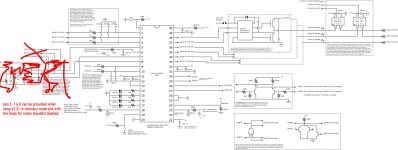Futterama said:
Oh! That would free up some pins then

I thought they were used for zero crossing detection, but I guess you use the phase current measurement for than instead.
What consequences would it have for the controller operation in general to disable the check for standstill?
Well, it's a safety check. Before I had recovery the voltage sensing was the only way the controller could tell the motor was standing
still, and the motor had to be standing still for the controller to be able to grab control. As it is sinewave FOC, all three motor
terminals are powered all of the time, so if the controller would grab control without being in sync with the motor, all hell would
break lose (the motor will freeze and quite possibly make you crash, and blow up the powerstage too).
Now the new recovery mode can come in sync with an already running motor and it doesn't need the voltage info for that. There is
a bit of danger here though in a sense that looking at the motor voltages and waiting for those to be 0 (or 2.5V actually with the
schematic I used) will also tell you whether a FET is conducting when it shouldn't. With a blown (always ON) FET the controller would
be stuck in drive_0, so a safety measure. When disabling the motor standstill check also the (implied) FET check is disabled.
The recovery is programmed such that whenever something goes wrong like an error current violation it will always go to recovery mode
(instead of drive_0 as before). In recovery it will try to sync with a running motor for a preset amount of time (a setup menu option), if
it doesn't sync it will jump back to drive_0. There then a blown FET would be detected, if the check for motor standstill is enabled.
If checks are disabled (there's also a throttle closed check in drive_0) it will go back and try to recover again, indefinatly.



